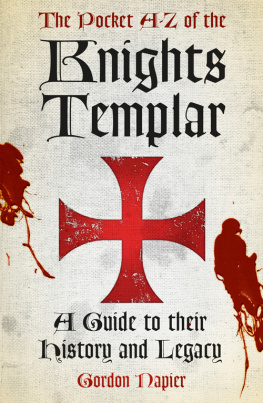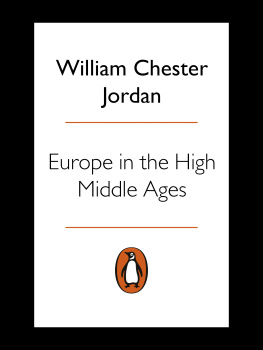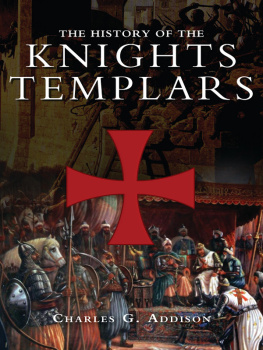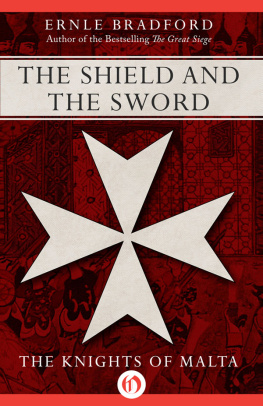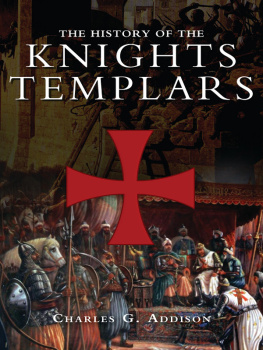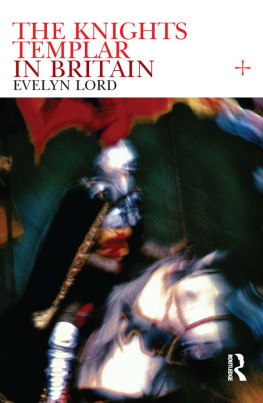THE KNIGHTS HOSPITALLER
This short study of the history of the Order of St John of Jerusalem, Rhodes and Malta, also known as the Knights Hospitaller, is intended as an introduction to the Order for academics working in other fields, as well as the interested general reader. Beginning with a consideration of the origins of the Order as a hospice for pilgrims in Jerusalem in the eleventh century, it traces the Hospitaller's development into a military order during the first part of the twelfth century, and its military activities on the frontiers of Christendom in the eastern Mediterranean, Spain and eastern Europe during the middle ages and into early modern period: its role in crusades and in wars against non-Christians on land and at sea, as well as its role in building and maintaining fortresses. It also considers the Order's activities away from the frontiers of Christendom: its economic activities and its relations with patrons and rulers throughout Europe, as well as its hospitaller work and its religious life. The focus of the study is on the medieval period down to the loss of Rhodes in 1522, but the final chapters of the book consider the Order's history on Malta from the sixteenth to the end of the eighteenth century, and from the loss of Malta in 1798 to the present day.
HELEN NICHOLSON is Senior Lecturer in History, Cardiff University
Can be recommended not only to scholars but also to the general public. All those interested in the history of the crusades must be grateful to have so succinct, so reliable and so readable a summary. CRUSADES.
Nicholson, one of the UK's leading historians of the medieval military orders, succeeds in setting out [the] main features in an authoritative and accessible manner. She has a flair for clear and uncluttered explanations enlivened with telling detail and quotation. And her account is comprehensive An attractive volume. HISTORY.
THE KNIGHTS HOSPITALLER
Helen Nicholson
THE BOYDELL PRESS
Copyright Helen Nicholson 2001
All Rights Reserved . Except as permitted under current legislation no part of this work may be photocopied, stored in a retrieval system, published, performed in public, adapted, broadcast, transmitted, recorded or reproduced in any form or by any means, without the prior permission of the copyright owner
First published 2001
The Boydell Press, Woodbridge
Reprinted in paperback 2003, 2006, 2007, 2009, 2011, 2013
This edition published 2016
ISBN 978-0-85115-845-7 Hardback
ISBN 978-1-84383-038-2 Paperback
ISBN 978-1-78204-736-0 eBook
The Boydell Press is an imprint of Boydell & Brewer Ltd
PO Box 9, Woodbridge, Suffolk IP12 3DF, UK
and of Boydell & Brewer Inc.
668 Mt. Hope Avenue, Rochester NY 14620, USA
website: www.boydellandbrewer.com
A CIP catalogue record for this title is available
from the British Library
Library of Congress Catalog Card Number 2001035615
Contents
Illustrations
FIGURES
Preface
T HIS is a brief history of the Sovereign Military Order of Malta, better known to historians and the general public as the Knights Hospitaller. The Order began in Jerusalem in the second half of the eleventh century as a hospice for sick poor pilgrims. Within a century of its foundation it gained papal protection and a religious rule, and became a supra-national religious order. From caring for sick pilgrims it expanded its operations to guarding pilgrims on the roads of the Holy Land and to defending the crusader states in the Holy Land. After the loss of the crusader states the Order moved its centre of operations to the island of Rhodes; expelled from Rhodes by the Ottoman Turks at the beginning of 1523, it went on to settle on the island of Malta. After being expelled from Malta in 1798 by the forces of Napoleon Bonaparte the Order eventually settled in Rome, where its base remains to this day.
This study is intended to provide a reference work for scholars and students who come across the Hospitallers in the course of other reading or research. It is not intended to provide a comprehensive guide to the whole history of the Order. The study surveys the Orders activities against the Muslims in the Holy Land, Rhodes and Malta, with some consideration of the Orders organisation, religious life, economic activities and relations with European rulers. It has not been possible to include detailed studies of the Orders activities in the various states of Europe. Readers looking for more detail than can be provided here should refer to the Further Reading section, at the end of the volume. This is arranged to provide easy reference to the various points in each chapter; notes have been kept to an essential minimum.
I have incurred many debts in the preparation of this volume. I am extremely grateful to my colleague Bill Zajac for assisting me in finding many of the essential books for this project and lending me books which would otherwise have been very difficult to obtain. I owe particular thanks to those who have generously supplied me with pictures and/or allowed me to reproduce them here: Professor Juan Fuguet Sans of Barcelona; Professor Denys Pringle of Cardiff; Edna and Eliezer Stern of the Israel Antiquities Authority; and Dr Theresa Vann of the Hill Monastic Manuscript Library, St Johns University, Collegeville, Minnesota. I am also most grateful to the following institutions which have provided me with pictures and allowed me to reproduce them here: the Biblioteca Communale Augusta, Perugia; the Bibliothque Nationale, Paris; the Israel Antiquities Authority; the National Maritime Museum, Greenwich; and the Bridgeman Art Library. In addition I thank Professor Alain Demurger of the University of the Sorbonne, Paris; Dr Edward Coleman of University College, Dublin; Zsolt Hunyadi of the Central European University, Budapest, and Dr Ann Williams, retired, who supplied me with essential advice and contacts towards obtaining the illustrations in this book.
I am grateful to the staff of Cardiff University Library, the British Library, London, the Public Record Office, London, and the National Library of Malta for research facilities and assistance.
In 1999 the Academic Study Group on Israel and the Middle East gave me a grant towards a journey to Israel where I was able to meet fellow crusade historians and visit sites, which has been a great help in the preparation of this book.
I owe a debt to many other scholars, colleagues and friends: there are too many to list, but I should mention in particular Dr Anthony Luttrell, Dr Alan Forey and Professor Jonathan Riley-Smith, for allowing me to pick their brains on many occasions, and my colleagues Professors Peter Coss and Peter Edbury and Dr Kari Maund for supplying me with essential references. My husband Nigel Nicholson drew the maps and took the photographs of Rhodes and Malta. John Morgan produced the photographs of Crac des Chevaliers and Marqab. Professor Peter Edbury and Nigel Nicholson read the work through in the final stages and have saved me from many errors. My son Gawain, who has already made a small personal contribution to Hospitaller scholarship in his pamphlet Why the Turks attacked Malta, written at the age of six, has exercised admirable patience throughout the project. My students have contributed to this volume in various ways and I am grateful for their support, enthusiasm and constant flow of ideas.
Because this book is aimed at scholars and students who are not specialists on the history of the Order of the Hospital, I have tried to avoid technical terms where there is a modern English equivalent. Therefore I have used tongue instead of langue and inn instead of auberge , for example. In order to assist readers in finding places mentioned on modern maps, I have endeavoured to give both the medieval place names and the modern forms. All translations into English, unless otherwise indicated in the notes, are by the author.
Next page

